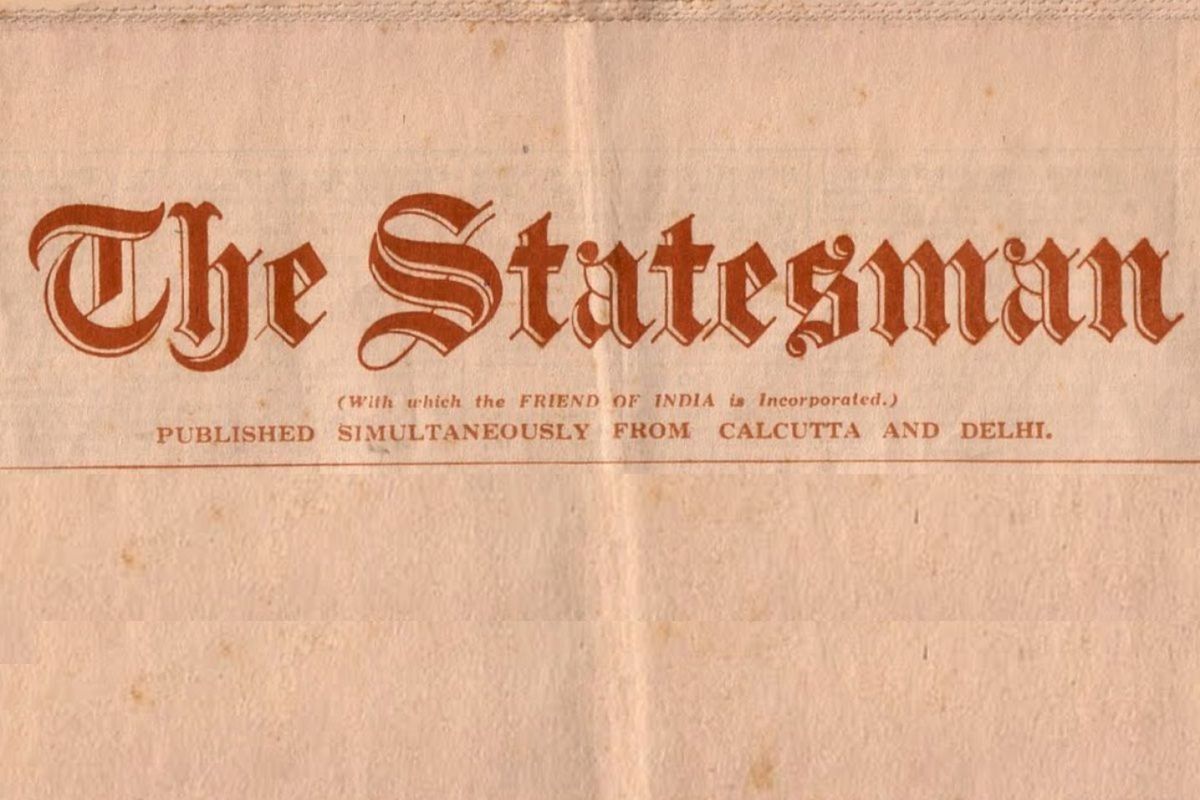Leading women personalities on what it takes to be a woman!
On International Women's Day, The Statesman talked to esteemed women personalities from various fields on what it takes to be a woman in our country and what empowers them.
On this day a century ago, these were some of the news items The Statesman readers got to read about India and the world.

OCCASIONAL NOTE
In bringing to a close the series of fascinating articles which he has been contributing to the Daily Telegraph under the title of “The Story of the Victorious Tanks,” Major Clough Williams-Ellis, M.C., claims, with justice, that “every other factor having been cancelled out, the fact that the French and the British possessed tanks and the Germans did not, was just enough to win the last war for the Allies.” But what about the next war? Major Williams-Ellis has no qualms on that point, provided we do not slide into a groove and sacrifice the unparalleled advantage which we have gained. “The British and French led, and in 1919,” he remarks, “still lead absolutely with tanks. If we like to carry on we have such a start, both in design and manufacturing experience that we could easily make it impossible for any other nation to draw abreast of us. It is, of course, impossible to be too discreet as to the new machines which have already been made and as to the new projects which exist.” Major Williams-Ellis considers that the tank is well-adapted to the British mechanical and fighting genius, – a fact indicated, indeed, by its invention by British soldiers and engineers, – and that this simple circumstance renders it extremely unlikely that we shall ever be outclassed in this or in any other form of mechanical warlike contrivance.
Advertisement
THREE STAGES OF EDUCATION
Advertisement
The Hon. Mr. Paranjpye, presiding over the Provincial Educational Conference at Surat, suggested three stages of education, one for children, one for adolescents and one for young persons. The first stage would be approximate to the range of the fifth English standard, the second to the intermediate standard and the third to the full university course. Mr. Paranjpye said that instruction in the first stage should be in the vernacular, with knowledge of English. The second stage should last for four years, and instruction might be given in the vernacular for the first two years and then English should be used, and in the examinations at the end of two years the students might have the option of answering in the vernacular or in English. Mr. Paranjpye also urged the recruitment of more Indians to the educational services.
COURTESIES OF THE ROAD
The annual police report for Bombay city for 1918, contains some figures interesting to motorists. During 1918, the number of cars registered was 383, of which 148 were of American manufacture. The total registration in Bombay up to the end of 1918 was 6,912, including 229 heavy motor vehicles. These do not include the large number of cars imported during the present year. The number of taxi-cabs was 259, a decrease of 44 since 1917. These vehicles were thoroughly inspected twice during the year, and have been maintained at a high standard of efficiency and comfort. Driving licenses numbering 5,132 were issued and renewed. The Police Commissioner says few licensed drivers who have had no experience of driving in western countries have any respect for the courtesies of the road, and nothing but a series of prosecutions will bring them to their bearings.
POSTS AND TELEGRAPHS
SIMLA, NOV 5
The Annual Report of the Posts and Telegraphs Department for 1918-19 by Mr. G.R. Clarke is published. At the close of 1918-19 there were 99,074 postal officials, 19,445 post offices, and 1,57,395 miles of mail lines. During the year over 1094 million articles, including nearly 31 million registered articles, were posted. Stamps worth Rs 3,52,50,000 were sold for postal purposes, and over 36 million money orders of the total value or Rs 79 and half crores were issued. A sum of nearly Rs 16 and half crores was collected for tradesmen and others on valuepayable articles. Over 3 and three fourth million insured articles valued at over Rs 113 crores were handled, Customs duty aggregating about Rs 24 and three fourth lakhs was realised on parcels and letters from abroad. The total revenue and expenditure for the year, after making the various administrative adjustments, mounted to Rs 4,70,50,000 lakhs and Rs 4,32,50,000 respectively, leaving a surplus of 38 lakhs.
THE GERMAN BUDGET
The National Assembly has passed the third reading of the 1919 Budget. Herr Erzberger stated that the expenditure was 79,000 million marks, compared with revenue for 1918 totalling nine thousand millions. The new taxes were estimated to yield nine thousand millions. The National Debt amounted to two-hundred thousand millions, on which the interest charged was approximately nine thousand millions.
Advertisement